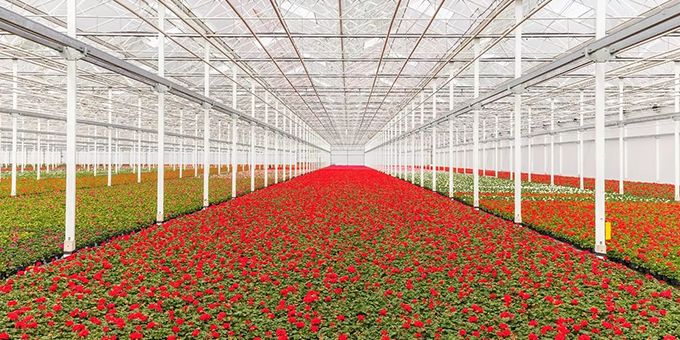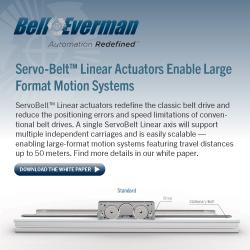CO2, humidity and temperature sensors must provide accurate and reliable measurement results to the climate control system in the greenhouse. Inaccurate or even false readings impact on productivity and, in the worst case, can jeopardize the entire harvest.
 Cosy Climate in the Greenhouse - Climate Sensors Ensure Optimum Growing Conditions
Cosy Climate in the Greenhouse - Climate Sensors Ensure Optimum Growing Conditions

Johannes Fraundorfer | E+E Elektronik USA
In greenhouses, plants and vegetables are cultivated all year round under controlled conditions. For this purpose, modern greenhouses are equipped with a wide variety of technical systems for irrigation, lighting, shading, CO2 fertilisation, heating, ventilation and cooling. In addition to supplying the plants with sufficient water, light and nutrients, best possible control of humidity, temperature and CO2 content are some of the decisive factors for ideal plant growth. Since the climate conditions in the greenhouse have a direct influence on the quality and yield of the plants, it is important to monitor and regulate them as closely as possible.
Challenges for Climate Sensors in Greenhouses
CO2, humidity and temperature sensors must provide accurate and reliable measurement results to the climate control system in the greenhouse. Inaccurate or even false readings impact on productivity and, in the worst case, can jeopardise the entire harvest. The sensors used for climate monitoring therefore have a direct influence on the economic success of a greenhouse crop.
But the climatic conditions that are conducive to plant growth are a challenge for the sensors. Influencing factors that can have a negative effect on the accuracy and service life of the sensors are:
- Permanently high humidity and occasional condensation (cucumbers, melons, orchids, mushrooms, tropical plants)
- Chemical contamination with highly corrosive substances (sulphur in rose greenhouses, chlorine dioxide, ethene ...)
- Fertilisers, pesticides and herbicides (especially for orchid cultivation in combination with high humidity)
- Solvents from cleaning solutions, e.g., hydrogen peroxide contamination from disinfection
Criteria for Selecting the Right Sensors
Greenhouse outfitters and operators need to pay particular attention to the choice of suitable sensors. Sensors that meet the following quality criteria are suitable for use in harsh environments:
- High long-term stability, even in harsh and aggressive environments
- Resistant to pollution (e.g., protective coating of the sensing element)
- Heated sensing module/heated sensing probe (prevents condensation and corrosion)
- Robust, dust- and waterproof enclosure (protection class IP65/ NEMA 4)
- Service-friendly (simple sensor replacement or replaceable sensing module)
It is of decisive importance for the quality and yield of the plants cultivated in the greenhouse that the sensors provide accurate, long-term stable and reproducible measurement results. At the same time, precise and continuous climate monitoring allows the use of resources, e.g., for heating, humidification or CO2 fertilisation, to be regulated as efficiently and economically as possible.
Tip: The EE212 humidity and temperature sensor by E+E Elektronik is optimised for use in greenhouses. The E+E sensing element with sensor coating, a wide choice of filter caps and the IP65 / NEMA 4 enclosure ensure excellent measurement performance in harsh environments. Thanks to innovative rapidX technology, the sensing module of the EE212 can be easily replaced on site.
Industrial Mushroom Cultivation – Difficult Conditions for Climate Sensors
Mushroom cultivation is a special form of indoor farming. Mushroom farms reproduce the natural growing conditions of edible mushrooms as closely as possible. Throughout the different phases of mushroom production - from compost preparation to mushroom bed initiation and harvesting - the humidity, temperature and CO2 concentration must be very precisely controlled. Deviations from the ideal values impact on quality and reduce the crop yield.
On mushroom farms, sensors are exposed to permanent high humidity and contamination by fungal spores and mycelium.
For the sensors, the permanently high humidity (> 95 % RH) and contamination by the released fungal spores and fungal threads (mycelium) pose a particular challenge. Sensors for industrial mushroom cultivation must therefore be extremely resistant to contamination and measure accurately and reliably even under high humidity conditions.
Find out more about the E+E sensors for mushroom cultivation here.
The content & opinions in this article are the author’s and do not necessarily represent the views of AgriTechTomorrow

E+E Elektronik
Lowering of energy costs, acceleration of growth and extension of the possible storekeeping duration can be optimised by the precise measurement of humidity, CO2-content and temperature. Optimum basic conditions for animals and plants ensure best agricultural products. As different applications demand various adopted solutions for optimization of agricultural processes, E+E Elektronik provides a broad portfolio of agricultural monitoring products
Other Articles
Ripening Fruit in Ripening Chambers – How Bananas & the Like Ripen in the Best Possible Way
Calculating Break Even and ROI When Investing in Sensors for the Cannabis Market
"Growth Turbo" CO2 - How Does CO2 Fertilisation Work in the Greenhouse?
More about E+E Elektronik
Comments (0)
This post does not have any comments. Be the first to leave a comment below.
Featured Product


